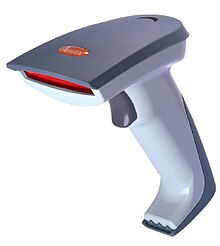A medical error is a preventable adverse effect of care ("iatrogenesis"), whether or not it is evident or harmful to the patient. This might include an inaccurate or incomplete diagnosis or treatment of a disease, injury, syndrome, behavior, infection, or other ailment.

An adverse drug reaction (ADR) is a harmful, unintended result caused by taking medication. ADRs may occur following a single dose or prolonged administration of a drug or may result from the combination of two or more drugs. The meaning of this term differs from the term "side effect" because side effects can be beneficial as well as detrimental. The study of ADRs is the concern of the field known as pharmacovigilance. An adverse event (AE) refers to any unexpected and inappropriate occurrence at the time a drug is used, whether or not the event is associated with the administration of the drug. An ADR is a special type of AE in which a causative relationship can be shown. ADRs are only one type of medication-related harm. Another type of medication-related harm type includes not taking prescribed medications, known as non-adherence. Non-adherence to medications can lead to death and other negative outcomes. Adverse drug reactions require the use of a medication.

A barcode printer is a computer peripheral for printing barcode labels or tags that can be attached to, or printed directly on, physical objects. Barcode printers are commonly used to label cartons before shipment, or to label retail items with UPCs or EANs.
Computerized physician order entry (CPOE), sometimes referred to as computerized provider order entry or computerized provider order management (CPOM), is a process of electronic entry of medical practitioner instructions for the treatment of patients under his or her care.

An infusion pump infuses fluids, medication or nutrients into a patient's circulatory system. It is generally used intravenously, although subcutaneous, arterial and epidural infusions are occasionally used.
Patient safety is a discipline that emphasizes safety in health care through the prevention, reduction, reporting and analysis of error and other types of unnecessary harm that often lead to adverse patient events. The frequency and magnitude of avoidable adverse events, often known as patient safety incidents, experienced by patients was not well known until the 1990s, when multiple countries reported significant numbers of patients harmed and killed by medical errors. Recognizing that healthcare errors impact 1 in every 10 patients around the world, the World Health Organization (WHO) calls patient safety an endemic concern. Indeed, patient safety has emerged as a distinct healthcare discipline supported by an immature yet developing scientific framework. There is a significant transdisciplinary body of theoretical and research literature that informs the science of patient safety with mobile health apps being a growing area of research.
A Patient Safety Organization (PSO) is a group, institution, or association that improves medical care by reducing medical errors. Common functions of patient safety organizations are data collection, analysis, reporting, education, funding, and advocacy. A PSO differs from a Federally designed Patient Safety Organization (PSO), which provides health care providers in the U.S. privilege and confidentiality protections for efforts to improve patient safety and the quality of patient care delivery
In medicine, an indication is a valid reason to use a certain test, medication, procedure, or surgery. There can be multiple indications to use a procedure or medication. An indication can commonly be confused with the term diagnosis. A diagnosis is the assessment that a particular medical condition is present while an indication is a reason for use. The opposite of an indication is a contraindication, a reason to withhold a certain medical treatment because the risks of treatment clearly outweigh the benefits.

Southwestern Vermont Medical Center (SVMC) is a non-profit general medical surgical hospital located in Bennington, Vermont. It is licensed for 99-beds. Founded in the early 20th century by donations from Henry W. Putnam and his son, SVMC is the only hospital in Bennington County, Vermont. It also serves portions of western Windham County, Vermont, eastern Rensselaer County, New York, and eastern Washington County, New York.
Health information technology (HIT) is health technology, particularly information technology, applied to health and health care. It supports health information management across computerized systems and the secure exchange of health information between consumers, providers, payers, and quality monitors. Based on a 2008 report on a small series of studies conducted at four sites that provide ambulatory care – three U.S. medical centers and one in the Netherlands, the use of electronic health records (EHRs) was viewed as the most promising tool for improving the overall quality, safety and efficiency of the health delivery system.
Electronic prescription is the computer-based electronic generation, transmission, and filling of a medical prescription, taking the place of paper and faxed prescriptions. E-prescribing allows a physician, physician assistant, pharmacist, or nurse practitioner to use digital prescription software to electronically transmit a new prescription or renewal authorization to a community or mail-order pharmacy. It outlines the ability to send error-free, accurate, and understandable prescriptions electronically from the healthcare provider to the pharmacy. E-prescribing is meant to reduce the risks associated with traditional prescription script writing. It is also one of the major reasons for the push for electronic medical records. By sharing medical prescription information, e-prescribing seeks to connect the patient's team of healthcare providers to facilitate knowledgeable decision making.

The Veterans Health Information Systems and Technology Architecture (VISTA) is the system of record for the clinical, administrative and financial operations of the Veterans Health Administration VISTA consists of over 180 clinical, financial, and administrative applications integrated within a single shared lifelong database (figure 1).
An automated dispensing cabinet (ADC), also called a unit-based cabinet (UBC), automated dispensing device (ADD), or automated dispensing machine (ADM), is a computerized medicine cabinet for hospitals and healthcare settings. ADCs allow medications to be stored and dispensed near the point of care while controlling and tracking drug distribution.
Barcode technology in healthcare is the use of optical machine-readable representation of data in a hospital or healthcare setting.

The Broselow Tape, also called the Broselow pediatric emergency tape, is a color-coded length-based tape measure that is used throughout the world for pediatric emergencies. The Broselow Tape relates a child's height as measured by the tape to their weight to provide medical instructions including medication dosages, the size of the equipment that should be used, and the level of energy when using a defibrillator. Particular to children is the need to calculate all these therapies for each child individually. In an emergency, the time required to do this detracts from valuable time needed to evaluate, initiate, and monitor patient treatment. The Broselow Tape is designed for children up to approximately 12 years of age who have a maximum weight of roughly 36 kg (79 lb). The Broselow Tape is recognized in most medical textbooks and publications as a standard for the emergency treatment of children.
Medical device connectivity is the establishment and maintenance of a connection through which data is transferred between a medical device, such as a patient monitor, and an information system. The term is used interchangeably with biomedical device connectivity or biomedical device integration. By eliminating the need for manual data entry, potential benefits include faster and more frequent data updates, diminished human error, and improved workflow efficiency.
Antimicrobial stewardship (AMS) refers to coordinated efforts to promote the optimal use of antimicrobial agents, including drug choice, dosing, route, and duration of administration.

Drug labelling is also referred to as prescription labelling, is a written, printed or graphic matter upon any drugs or any of its container, or accompanying such a drug. Drug labels seek to identify drug contents and to state specific instructions or warnings for administration, storage and disposal. Since 1800s, legislation has been advocated to stipulate the formats of drug labelling due to the demand for an equitable trading platform, the need of identification of toxins and the awareness of public health. Variations in healthcare system, drug incidents and commercial utilization may attribute to different regional or national drug label requirements. Despite the advancement in drug labelling, medication errors are partly associated with undesirable drug label formatting.
Emily S. Patterson is an American ergonomist and academic. She is a professor in the Ohio State University College of Medicine.








